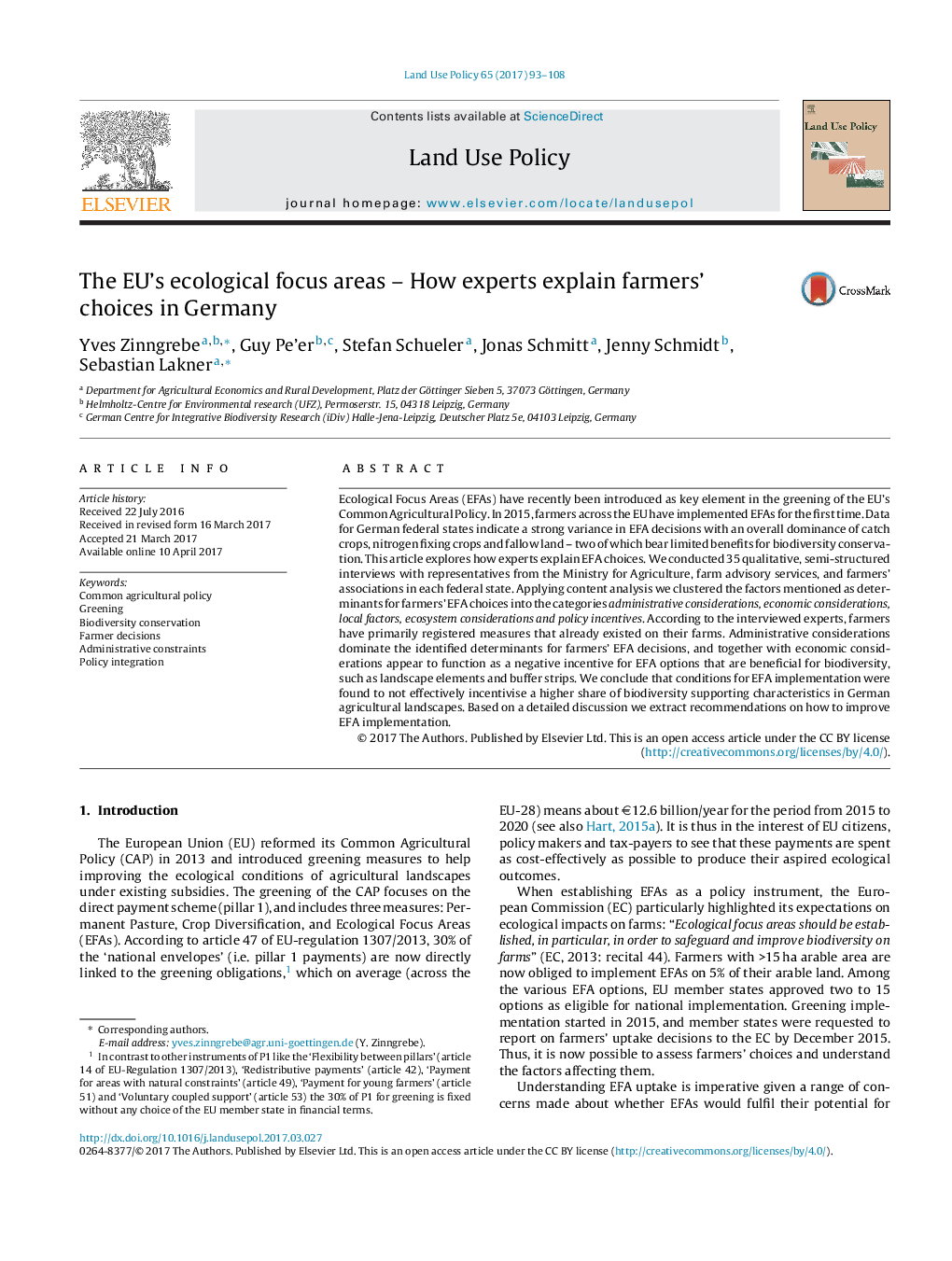| کد مقاله | کد نشریه | سال انتشار | مقاله انگلیسی | نسخه تمام متن |
|---|---|---|---|---|
| 6461126 | 1421818 | 2017 | 16 صفحه PDF | دانلود رایگان |

- Catch crops (68%), fallow land (16.2%) and nitrogen fixing crops (11.8%) dominate EFA area in 2015.
- Factors that experts used to explain EFA decisions were grouped in five categories.
- Administrative and economic considerations dominate EFA decisions; ecological considerations have little impact.
- EFAs financially reward existing structures, but do not incentivise additional conservation activities.
- Based on expert statements we provide recommendations for EFA improvements.
Ecological Focus Areas (EFAs) have recently been introduced as key element in the greening of the EU's Common Agricultural Policy. In 2015, farmers across the EU have implemented EFAs for the first time. Data for German federal states indicate a strong variance in EFA decisions with an overall dominance of catch crops, nitrogen fixing crops and fallow land - two of which bear limited benefits for biodiversity conservation. This article explores how experts explain EFA choices. We conducted 35 qualitative, semi-structured interviews with representatives from the Ministry for Agriculture, farm advisory services, and farmers' associations in each federal state. Applying content analysis we clustered the factors mentioned as determinants for farmers' EFA choices into the categories administrative considerations, economic considerations, local factors, ecosystem considerations and policy incentives. According to the interviewed experts, farmers have primarily registered measures that already existed on their farms. Administrative considerations dominate the identified determinants for farmers' EFA decisions, and together with economic considerations appear to function as a negative incentive for EFA options that are beneficial for biodiversity, such as landscape elements and buffer strips. We conclude that conditions for EFA implementation were found to not effectively incentivise a higher share of biodiversity supporting characteristics in German agricultural landscapes. Based on a detailed discussion we extract recommendations on how to improve EFA implementation.
Journal: Land Use Policy - Volume 65, June 2017, Pages 93-108